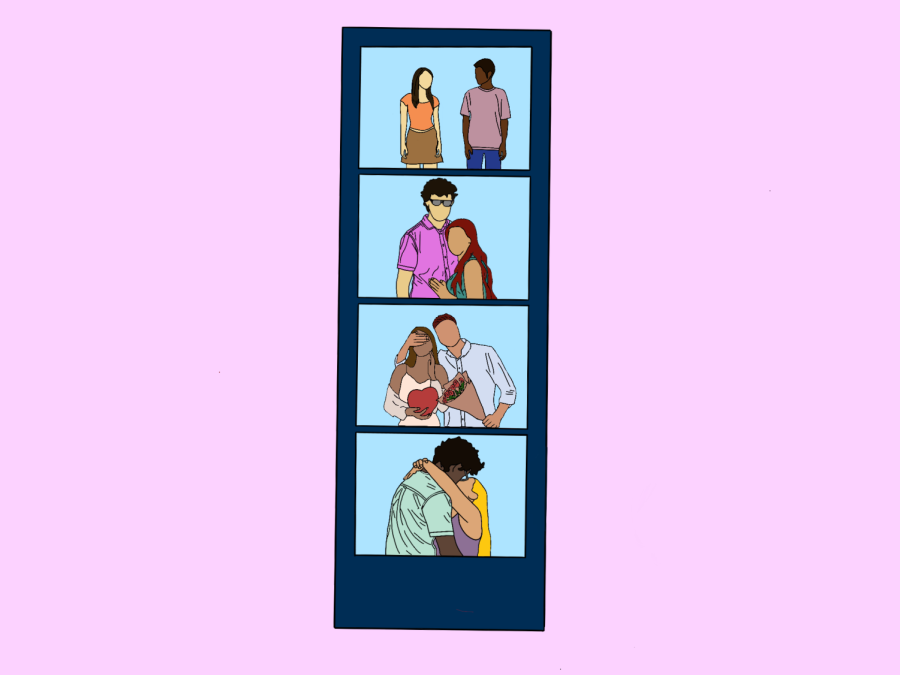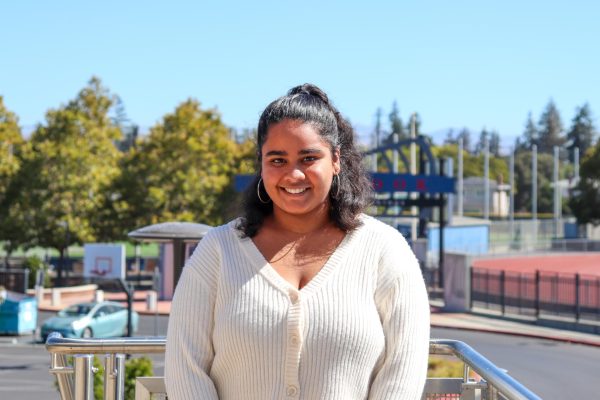Relationships then vs. now
Graphic illustrations by Alyssa Wang, Neha Ayyer and Vidushi Upadhyay
Over the years, our standards for love have transformed along with the changes in our world.
February 6, 2023
Relationship standards have evolved as humanity has redefined love and the purpose of it. From medieval times to present-day relationships, varying factors have shaped current ideas of what romance should look like. As technology becomes an increasingly common medium to find and communicate with others, the future holds a different version of what relationship culture is.
Medieval
Socially and politically, Medieval society looked down upon marriage for the sake of romance. Feudal alliances were important for maintaining political stability, and these alliances were cemented by marriages. The personal feelings of those being married were often not consulted.
“Because medieval marriages were arranged, they were often unhappy, or at least not fulfilling in the way we’d understand it,” said Dr. Sheila Fisher, Professor of English, Trinity College, Hartford, CT. “The Middle Ages didn’t have our definition of ‘toxicity’ in relationships, though it did acknowledge destructive forces in relationships: jealousy, inordinate passion, miscommunication.”
1700s & 1800s
The new economic realities of the 19th century cross-pollinated with the ideas that emerged from the Enlightenment about individual rights and the pursuit of happiness, and the result was an Age of Romanticism. The new ideal was not only to marry for love but that love was to live on forever.
1900s and 2000s
During the 2000s, people had fewer expectations to marry their current partner. Dating was perceived as a casual way to spend time and have fun. Dating outside of one’s ethnicity or race became more common as more people immigrated and is now much more normalized.
Hookup Culture
By 1900, the average American woman was having only half as many children as she would have three generations earlier.
Before the phrase “hooking up”, there was “petting,” which covered deliberately touching body parts above or below another person’s waist. Women started to experiment more with relationships and their sexuality as a part of their individuality, still making sure to continue their responsibilities.
“As there are more women who work, family dynamics and roles are changing,” licensed marriage family therapist Mark Mouro said. “For the first time we are navigating how to balance romantic and family relationships with these new responsibilities.”
Since the 2000s and the rise of many ways to contact another person through the Internet, hook-up culture has replaced the dating culture.
The number of hookups is nearly double the number of first dates for U.S. college students. More emphasis is placed on the number of people a person has hooked up with, known as body count, rather than the identity of the actual people.
“A lot of people have this idea that high school doesn’t last forever,” sophomore Shannon Tai said. “So, people turn to hook ups as a way to pass time and be with someone.”
Popular media and Technology
Love is a common topic seen in books and movies, which often depict ideal relationships while normalizing signs of toxicity. Viewers don’t always recognize the harmful tropes and hope to experience similar situations in real life. In “The Notebook,” a popular novel and movie known for its “dreamy” love story, the male lead is overly obsessed with the female lead and emotionally abuses her after their breakup. However, it’s perceived as a romantic gesture to be praised rather than avoided.
Social media and reliance on technology have also impacted our perceptions of romance. Online influencers are constantly showing the positive side of their relationships, which creates unrealistic expectations for what romance should look like.
“Relationships are glorified on social media and there’s a lot of behind the scenes that you don’t see,” Tai said. “People portray the best of themselves online.”
Technology has created some positive effects in the dating world. Facetime and texting facilitate long-distance relationships and allow couples to contact each other more often. With the increase in the popularity of dating apps, people looking for partners can easily meet new people in their area.




































































